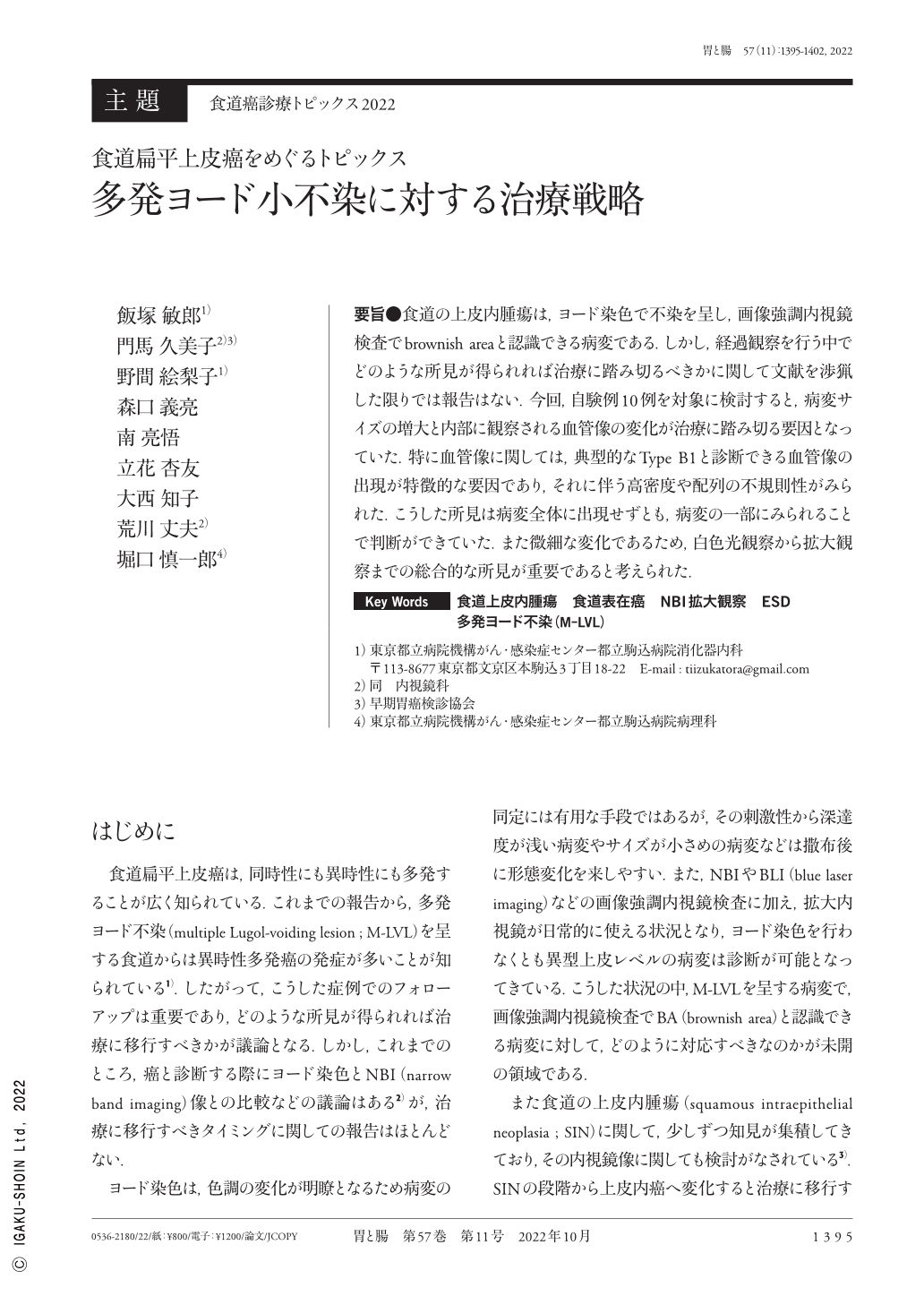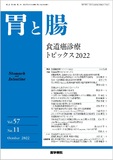Japanese
English
- 有料閲覧
- Abstract 文献概要
- 1ページ目 Look Inside
- 参考文献 Reference
要旨●食道の上皮内腫瘍は,ヨード染色で不染を呈し,画像強調内視鏡検査でbrownish areaと認識できる病変である.しかし,経過観察を行う中でどのような所見が得られれば治療に踏み切るべきかに関して文献を渉猟した限りでは報告はない.今回,自験例10例を対象に検討すると,病変サイズの増大と内部に観察される血管像の変化が治療に踏み切る要因となっていた.特に血管像に関しては,典型的なType B1と診断できる血管像の出現が特徴的な要因であり,それに伴う高密度や配列の不規則性がみられた.こうした所見は病変全体に出現せずとも,病変の一部にみられることで判断ができていた.また微細な変化であるため,白色光観察から拡大観察までの総合的な所見が重要であると考えられた.
On image-enhanced endoscopy, squamous intraepithelial neoplasia of the esophagus revealed a Lugor voiding area and can be identified as a brownish area. There are no reports on what follow-up findings should indicate a shift to endoscopic treatment. In a study of ten patients, the main reasons for treating the lesion were an increase in size and a change in microvessels. The appearance of atypical microvessels that could be diagnosed as typical Type B1, with associated high density and irregular arrangement, was a factor in the treatment decision. These findings did not have to be seen throughout the lesion but only in certain areas. Because of the minute changes, comprehensive findings obtained from white light observation to magnified endoscopy were considered crucial.

Copyright © 2022, Igaku-Shoin Ltd. All rights reserved.


